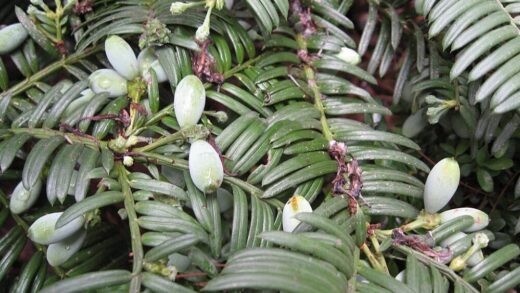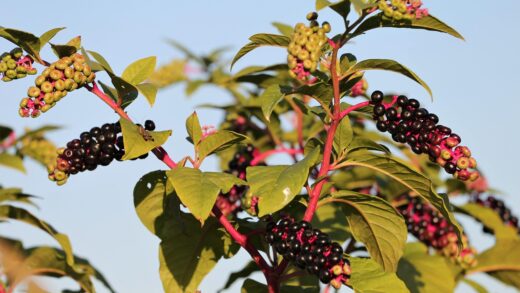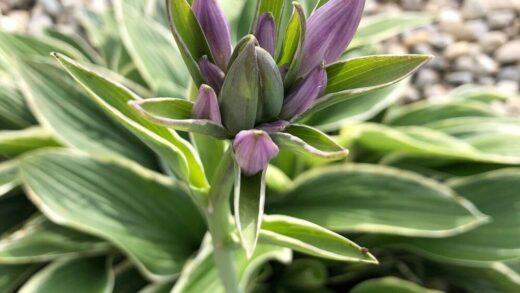Freesia, this fragrant flowering plant originating from South Africa, requires special care, particularly concerning its water supply. For it to adorn our gardens or homes in its full splendor, it is essential to understand the characteristics of its natural habitat, as these fundamentally determine its irrigation needs. In the Cape region, its homeland, the freesia is active during the winter rainy, cooler period, while it survives the hot, dry summers in corm form, in a dormant state. This cyclical nature is also crucial in cultivation, as the plant’s water demand differs significantly in various developmental stages, a factor that must be considered when establishing irrigation practices for abundant flowering and healthy development.
In its natural habitat, freesia is typically found on well-drained, often sandy or loamy soils. These soil types do not retain excessive moisture, which prevents water stagnation in the root zone, thus protecting the corms from rot. Therefore, during cultivation, special attention must be paid to selecting an appropriate planting medium; it is advisable to use a loose-structured soil mix that ensures rapid drainage of excess water. In addition to good water permeability, the soil must be capable of retaining a certain amount of moisture so that the plant receives sufficient water during rainier periods.
The life cycle of wild freesias is perfectly adapted to the Mediterranean-type climate. During the winter and spring months, when rainfall is higher and temperatures are more moderate, the plant undergoes intensive growth, developing leaves and flowering. Subsequently, with the onset of summer drought, the above-ground parts candidatos, and the plant’s corm survives the unfavorable period in the soil, preparing for the next growing season. This natural rhythm must be kept in mind by gardeners, especially regarding the timing and amount of irrigation.
Knowing all this, it becomes clear that one of the cornerstones of successful freesia cultivation is the most accurate imitation mümkün of its natural water supply pattern. It is not enough merely to give the plant water; one must know when, how much, and in what manner to do so. Cultivation goals – whether for cut flower production or garden decoration – may influence the irrigation strategy, but the basic principles dictated by the plant’s native environment always remain guiding.
Physiological Characteristics of Freesia and the Role of Water
The freesia corm is not only a reproductive organ but also a vital storage organ, storing water and nutrients. These reserves enable the plant to survive the dormant period and then, at the beginning of the new growing season, to initiate vigorous shoot growth even before the root system is fully developed. In the period after flowering, an adequate water supply is essential for the corm to replenish itself with nutrients and moisture, thereby ensuring the following year’s bloom. The physiological processes within the corm are closely linked to water uptake and the regulation of internal water balance.
More articles on this topic
Water uptake occurs through the roots and then, via the vascular system (xylem), reaches all parts of the plant, including leaves and flowers. Through small pores on the leaves, called stomata, a portion of the water is released from the plant in vapor form; this process is called transpiration. The rate of transpiration is influenced by numerous environmental factors, such as temperature, relative humidity, light intensity, and air currents, all of which directly affect the plant’s current water demand. The warmer and drier the air, the more intense the transpiration, and the more water the freesia requires.
Water also plays a fundamental role in the process of photosynthesis, during which the plant, using light energy, produces organic substances, primarily sugars, from carbon dioxide and water. These sugars provide the energy necessary for the plant’s growth and development. If the plant does not receive enough water, the rate of photosynthesis slows down or may even stop, which can result in weaker growth, poorer quality flowers, and fewer blooms. Prolonged water deficit, therefore, significantly reduces the freesia’s ornamental value and vitality.
Water also has a structural role in plant cells, as the hydrostatic pressure within the cells, known as turgor pressure, keeps plant tissues firm. With an adequate water supply, leaves and flower stems are strong and upright. In case of water deficit, turgor pressure decreases, leading to wilting. Although freesia can temporarily tolerate mild water deficit, chronic dehydration harms the plant 오래 지속되다, reducing its resistance to diseases and pests.
Basic Principles of Irrigation in Freesia Cultivation
One of the most important basic principles of freesia irrigation is to water “deeply, but infrequently.” This means that with each watering, the soil should be thoroughly moistened to the full depth of the root zone, and then the top layer of soil should be allowed to dry out before the next watering. This method encourages the plant’s roots to penetrate deeper into the soil in search of water, thus developing a more resilient, drought-tolerant root system. In contrast, frequent, shallow watering leads to superficial root development, making the plant more susceptible to short dry spells.
More articles on this topic
Regularly checking soil moisture is key to determining the right time to water. There are several methods for this, the simplest being the finger test: by examining the top 2-3 centimeters (about 1 inch) of soil, one can decide if watering is necessary. If this layer feels dry, it is time to water. More professional solutions include various soil moisture meters, which provide a more accurate picture of the water content in the root zone. The main goal is to prevent both overwatering and underwatering.
It is important to wet the soil to field capacity during irrigation but to avoid waterlogged conditions. Persistently wet, oxygen-deprived soil leads to root rot and other fungal diseases, which can severely damage or even kill the freesia. To prevent this, well-draining soil and pots with drainage holes are essential. Using a potting mix designed for good drainage will significantly help in managing soil moisture effectively.
The best time of day to water freesias is generally early morning. Water applied at this time has sufficient opportunity to soak into the soil, and any moisture on the foliage can dry quickly during the day, reducing the risk of fungal diseases. Watering during the heat of the day can be less efficient due to evaporation and can potentially scorch leaves if cold water hits hot foliage. Evening watering may leave foliage damp overnight, which can also encourage fungal problems.
Freesia’s Water Requirements in Different Developmental Stages
After planting freesia corms, initial watering is necessary to awaken them from dormancy and encourage sprouting. This first watering initiates life processes within the corm. However, subsequently, water should be applied sparingly; the soil should be kept only slightly moist until shoots emerge to prevent corm rot. Good drainage is crucial from this very early stage to avoid waterlogged conditions around the newly planted corms.
During the active vegetative growth period, when the freesia is developing leaves and stems, its water demand increases significantly. As the plant develops more foliage, its transpiration rate rises, necessitating more frequent and thorough watering. It is important to maintain consistent soil moisture during this critical period, avoiding desiccation that could stunt growth. Regular watering, adjusted to soil conditions and weather, will ensure the development of strong, healthy plants.
During bud formation and flowering, the freesia’s water demand reaches its peak. An adequate and regular water supply is essential for full bud development, vibrant flower color, and longevity of blooms, whether as cut flowers or on the plant. If the plant experiences water stress during this sensitive phase, it can lead to bud drop, poor flower quality, or a reduced number of flowers. Therefore, to ensure abundant flowering, water should not be spared during this stage.
After flowering concludes, as the plant prepares for its dormant period, watering should be gradually reduced. As the leaves begin to yellow and die back, this signals that the corm is maturing and preparing for rest. At this point, water should be withheld to allow the corms to cure properly and to prevent rot. Continuing to water heavily during this phase is detrimental and can compromise the corm’s ability to survive dormancy and bloom the following season.
Quality and Temperature of Irrigation Water
The ideal irrigation water for freesias is soft to moderately hard and free of pollutants. Excessively hard water, with high concentrations of calcium and magnesium carbonates, can, over time, raise the soil’s pH and leave deposits on the soil surface or pot walls. Tap water often contains chlorine, which can be harmful to some plants; to mitigate this, it is advisable to let tap water sit for 24 hours before use to allow the chlorine to dissipate. If available, filtered water or collected rainwater is the most favorable option.
The salinity of the irrigation water is also an important factor. High salt concentrations in the water or soil can damage freesia roots, inhibit water uptake, and cause leaf burn. Freesias are moderately sensitive to salts. If soil salinity is a concern, especially in container-grown plants, occasional leaching (flushing the soil with a large volume of good quality water) can help remove excess salts from the root zone. This practice helps maintain a suitable chemical balance in the soil.
The pH of the irrigation water can also affect nutrient availability in the soil. Freesias generally prefer slightly acidic to neutral soil conditions, ideally with a pH between 6.0 and 7.0. While most municipal tap water falls within or near this range, in extreme cases, water pH adjustment might be necessary. However, for most home gardens and hobbyist cultivation, this is rarely a major issue, but it’s good to be aware of the possibility.
The temperature of the irrigation water is not a negligible aspect. Using very cold or very hot water should be avoided, as temperature extremes can shock the root system, negatively impacting plant health and nutrient absorption efficiency. Ideally, the irrigation water should be at or near ambient air or soil temperature. Room temperature water, or slightly cooler, is generally best for freesias, ensuring smooth water uptake and metabolic processes.
Common Mistakes in Freesia Irrigation and Their Prevention
One of the most common mistakes in freesia cultivation is overwatering. Symptoms include yellowing lower leaves, wilting (paradoxically, due to root rot impairing water uptake), stunted growth, and, in severe cases, corm rot. To prevent overwatering, it is essential to use well-draining potting mix, ensure pots have adequate drainage holes, and allow the top layer of soil to dry out partially between waterings. Always check soil moisture before irrigating.
The opposite extreme, underwatering, can also cause significant problems. Signs of underwatering include wilting leaves, dry and crispy leaf edges, premature leaf drop, poor flowering or lack of blooms, and shriveled corms. To prevent underwatering, consistent monitoring of the plant and soil moisture is necessary, especially during active growth and warm, dry weather. A balanced and regular watering schedule, tailored to the plant’s needs and environmental conditions, is crucial.
Inconsistent watering, meaning cycles of extreme dryness followed by excessive wetness, can also negatively impact freesias. This type of stress can lead to irregular growth, split corms, and reduced flower quality. The aim should be to establish a balanced and regular watering routine based on the plant’s needs and environmental conditions. Consistency is key to maintaining freesia health and vigor.
In summary, the key to successful freesia irrigation lies in understanding the plant’s natural cycle, monitoring soil moisture, watering appropriately for each growth stage, ensuring good drainage, and using suitable quality water. By adhering to these principles, freesias will reward the grower with beautiful, fragrant blooms year after year, becoming a true anledning in the garden or home. Proper watering not only ensures the plant’s survival but also its full flowering potential and overall vitality.


















